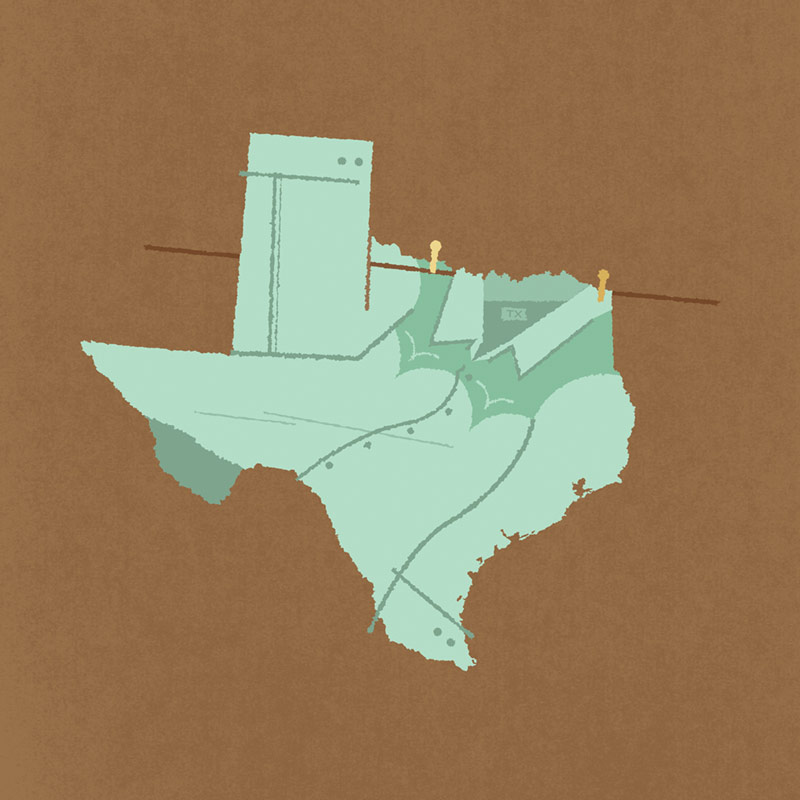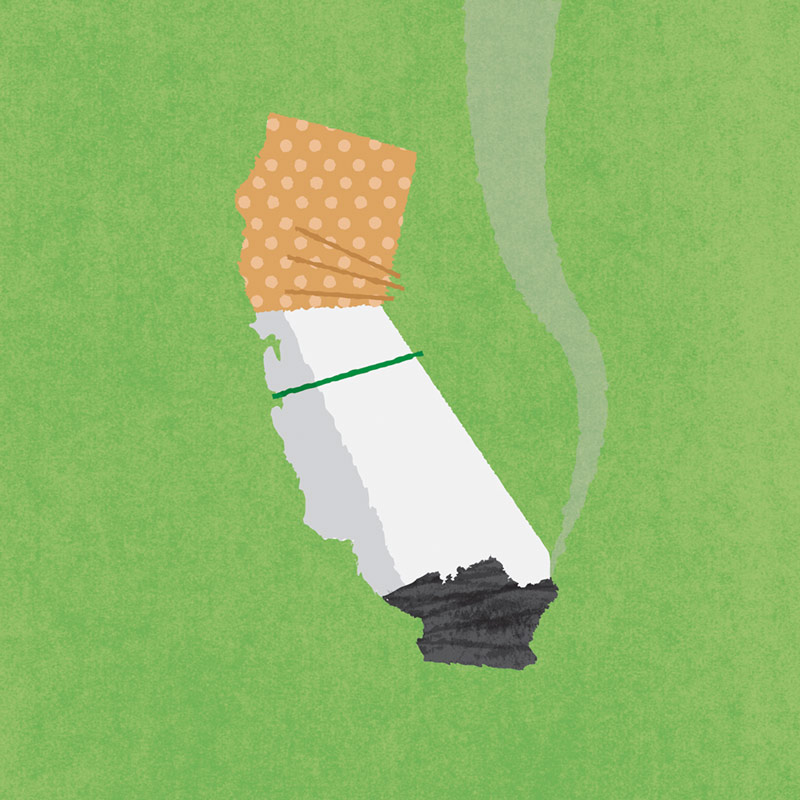
- Interview by Ryan & Tina Essmaker August 27, 2013
- Photo by Julia Robbs
Frank Chimero
- designer
- illustrator
- writer
Frank Chimero is a Brooklyn-based designer and author of The Shape of Design. He has worked for clients including Microsoft, Starbucks, Facebook, Newsweek, Bloomberg Businessweek, GOOD Magazine, and more. In 2010, he was chosen as a Young Gun by the Art Directors Club, and was honored as a New Visual Artist by Print Magazine.
Interview
Describe the path to what you’re doing now.
God, I really hate talking about myself. Maybe this was a bad idea. I was riding on the train over here, thinking about how I haven’t done a job interview in a decade. This is kind of terrifying.
Tina: Nah, it’s cool. We’re all friends here.
Ryan to Tina: You gotta let him have a couple beers first.
Liquid courage. Anyway, back to the question. I’ll skip the childhood stuff because it’s the same thing as many: I liked drawing; I drew; we got a computer; I drew on the computer; I got a bootleg copy of Photoshop. I think my path is similar to most people between the ages of 25–35 who do similar kinds of work as me.
Tina: Well, let me ask this. Where did you grow up?
I was born in Wantagh, the gateway to Jones Beach, on Long Island in New York. My parents are originally from Brooklyn, but moved to Wantagh, where we lived until I was eight or nine. Then we moved out to Missouri, which was a big, weird change. My dad owned an auto parts business and the life was sucked out of it by big box places, like AutoZone, or at least that was the case on Long Island. My dad had some family in Missouri, so that’s why we moved there. I also think it was one of those things for my parents where you hate what you grew up with and want to do the opposite. When we moved to Missouri, my parents bought four acres, my dad rented a backhoe and dug a pond, and my mom got ducks—it was totally bonkers. Like Green Acres or something.
Going from growing up in the suburbs to the woods was odd. There were very few neighbor kids, so I learned to entertain myself. I started drawing and then when I was 12 and we got a computer, I started drawing on that. Then I got a bootleg copy of Photoshop and started dickin’ around. I had friends from school who were in bands and after realizing that I had no musical talent of my own, I did what I could to be around music, which was designing t-shirts, band posters, and packaging—and Winamp skins.
Ryan to Frank: I forgot about those until you mentioned them.
Exactly. It all comes around because now I’m designing interfaces again—son of a bitch! You can’t outrun it.
(all laughing)
So I started doing that and I fell into design. I didn’t try very hard in high school because the things I was expected to do were easy for me. I don’t say that to brag; I say that to imply the concept of applying myself was really foreign, which made me a totally despicable person. (laughing)
After high school, I went to a regional college in Missouri, which was called Southwest Missouri State (SMS) at the time—a few years later, it turned into Missouri State. I went to school there because I got a really nice scholarship and it was going to cost less than anywhere else. Initially, I was trying to choose between majoring in anthropology or design. I had always liked art history, mythology, and folk tales. I thought people and the stories they told were really interesting, and anthropology intrigued me. I also had been obsessed with Indiana Jones since I was five or six and thought the life of an archaeologist was actually like that. The idea of going somewhere to discover hidden treasures from lost civilizations sounded like a great way to spend a life.
I decided to take an anthropology class, a few art history classes, and a couple foundation design classes to see how things would shake out after a year. After I took a scholarly, non-religious Old Testament class and struggled to memorize who begat who, I was like, “God! I can’t do this.” I was having fun in my art classes, so I declared myself a design major. It was blind luck, but the university actually had a really great design program at the time, even though it was in the middle of nowhere. The faculty was all eastern Europeans from Russia, Bosnia, and Poland, who were fleeing communism in the 80s and 90s; an academic position anywhere in the States had to have been preferable. The way my work looks is a result of that, I think. If you’re under communist censorship, you need to talk in code. You produce private languages to speak to small groups. You use concepts and circle your way to the truth, because you can’t plainly say what you want.
After college, I had a dream job opportunity in Seattle that fell through. I didn’t know what else to do, so I started freelancing. The freelancing stuff took off and I moved into a house with four other dudes who were all business majors. Because I decided to stay in Missouri last-minute, I got the basement room and it looked a lot like this [pointing around at the restaurant’s interior]: a low ceiling with wood-paneled walls. I’m very comfortable in here right now.
(all laughing)
So, yeah. For the first year of work, I was down in this basement with no windows in this house that was obviously built in the 1970s.
Then I had some friends who were moving to Chicago. Some money was coming in and I didn’t want to live in a basement anymore, so I moved to Chicago with them and kept freelancing. After a year, I left Chicago because it was snowing when I walked to mail my income tax check in April. I thought, “Fuck it! I can’t do this.” Right about then, my mentor at SMS was about to retire. He asked me if I’d be interested in coming back to Missouri and teaching some of his courses the next year because they didn’t have a candidate to replace him. (laughing) I think he probably asked me to do it because he knew I would teach them just like he did.
“It’s more important to do good and interesting things than it is to make money. If you do good and interesting things, then you have to trust that the money will follow.”
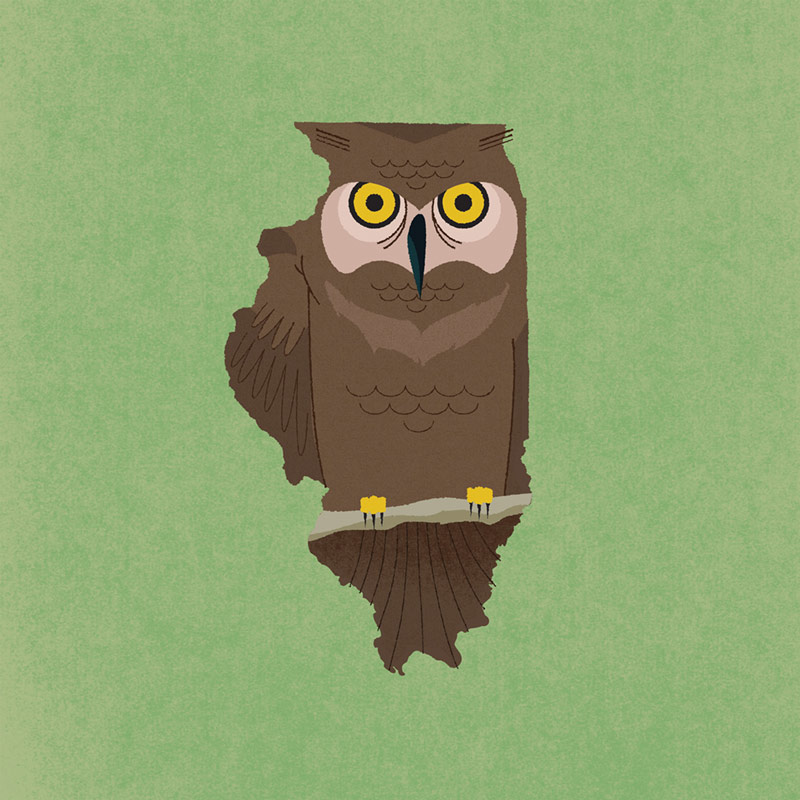
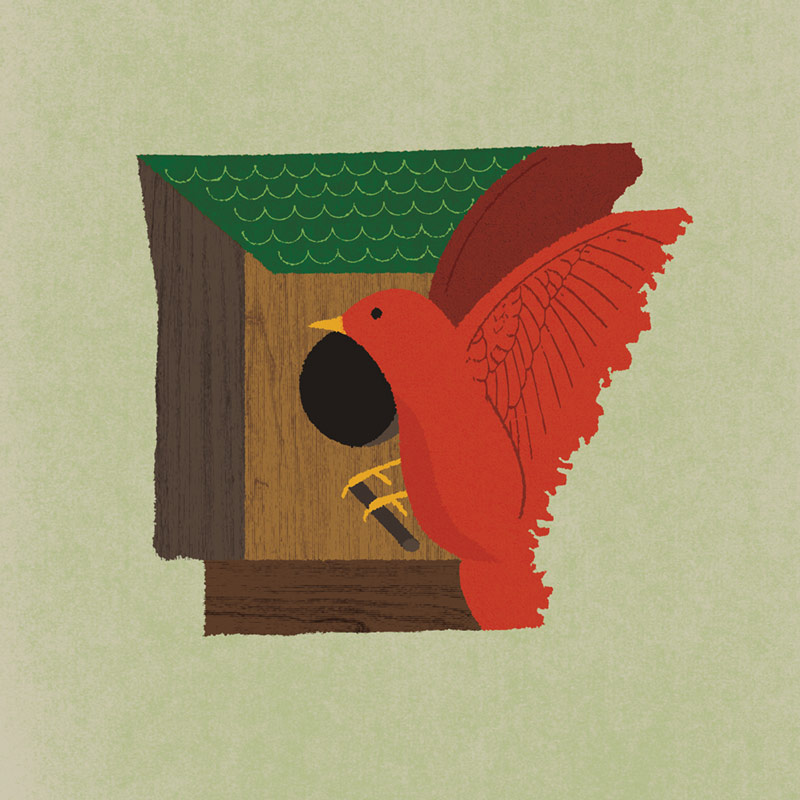
Tina: How old were you at the time?
I was pretty young—23 or 24. But it was teaching undergrad design in Missouri, and all my students were fresh, bright-eyed, and bushy-tailed—way different than students in New York. And, the design scene was much different for students in 2003 than 2013, if only because the Internet wasn’t a given and culture hadn’t yet swayed toward design like it has now.
I was getting some attention for my illustration work, so I knew more than they did, even if it was only three or four things. I guess that’s all you need to teach somebody. Nobody complained, so things worked out. In addition to teaching, I was still doing illustration. Most of the work that people know me for came out of that time period: the last few months I was in Chicago and the 18 months I was back in Missouri. After that, I moved to Portland.
Ryan: What made you move to Portland?
I knew that Missouri was a temporary thing. When I agreed to move back, I decided to give it a year or so because it was a good opportunity to start teaching, put my head down, work, and learn. After 18 months, I had exhausted the place, and it wasn’t really home anymore. I went out to Portland because I was interested in moving there or to Brooklyn. My friend Kate Bingaman-Burt—
Tina: Yay!
—who you’ve interviewed, said, “Why don’t you come out to Portland and teach with me at Portland State?” That was a cool way for me to go somewhere I’d never been, continue teaching, and try something new. So that’s what I did. I was out there for two and a half years before I moved to Brooklyn. I still love Portland.
Tina: Cool. So you’ve freelanced your entire career?
Yeah, I’ve never worked for someone other than a client, which is a bit unusual. There are certain things I don’t know that other people know from working for other people—sometimes that’s a good thing and other times it’s bad. That’s why I’ve been scared to grow the studio. I haven’t had a shitty boss, except when I’m bad to myself. I have this weird thing where I think that because I don’t have the bad experiences, I don’t know how to be a good boss. That might be a false way of thinking, but one of the reasons the studio has always been only me is because I haven’t worked for someone else and legitimately have no idea how a design shop works.
Tina: I think that’s an advantage, though.
Maybe. I have some blind spots, and they can complicate things. Occasionally, if you’re in a big rig, those blind spots mean you’re going to back up into something you don’t want to back up into.
Ryan: It comes down to knowing people.
That’s what I’ve learned. Whether it’s a client or, hypothetically, an employee, I try to ask what they need to be successful and if it’s reasonable for me to provide it. The answer is almost always yes. Also, I don’t really care about profitability or growth, so this is more of a lifestyle business. If I were to hire somebody, it would be because having someone else here would allow me to do a new kind of work I want to do, augment the work in an interesting way, or make it more fun.
Ryan: It’s easy to look at successful studios and assume that they’re making a lot of money. But it seems like maybe they are getting to do the kind of work they want to do because they’re turning down work that’s not a good fit. This is my outside perspective, but I imagine that even though those studios are doing well, they’re probably not getting rich.
The read I get from the places I admire is the work comes first. It’s more important to do good and interesting things than it is to make money. If you do good and interesting things, then you have to trust that the money will follow. Even if you do care about money more than other things, you’re not going to be ludicrously rich from design. You usually only get rich by doing boring things. Or by getting really lucky.
Ryan: People perceive that success equals money. When you’re doing something you’re passionate about and appear to be successful, people perceive that you have money. But to me, success equals being able to do what you want to do.
I think people are still looking at stuff with old models of understanding. They think if people are paying attention, then you’re making money, and the two are linked, so lots of attention means lots of money. That isn’t the case at all. Talk to any musician and they’ll tell you. It’s tough. The way we think is based on the way the world was a decade or two ago, which leaves some people in the dust. For instance, there was that interesting cover story by New York Mag on Grizzly Bear’s financial difficulties.

“There’s the whole Buddhist thing about the essence of a bowl being its emptiness—that’s why it’s useful. Its emptiness allows it to hold something. I guess that means that design must talk about something else. If you make design about design, you’re just stacking bowls, and that’s not what bowls are for.”
Ryan to Tina: Sorry I’m derailing your interview here.
Tina to Ryan: I can stay here all night.
No, keep it in. Let’s wander. We don’t have to go in a straight line.
Alright. You mentioned earlier that you stumbled into design, but did you have an “aha” moment when you realized that you wanted to focus on design?
One of the crazy things was what came out of doing work for friends’ bands and designing bullshitty Winamp skins in high school. In 1999 or 2000 or something, Windows Media Player came out with a new version that supported skins and I got hired by a company to come up with two or three of them for Microsoft to release. So, my very first paying client was Microsoft. I made enough money in two weeks to buy a new computer. I was like, “I can make money doing this?” It was great because it was super hacky. The way you made a skin was to make the sprites and assets, then write an XML file to spec out the whole skin, which was totally free-form. You’d have to specify the hover states, the X and Y coordinates of buttons, and what things were transparent. It wasn’t programming programming, but it was definitely markup.
That easily rolled into learning how to make websites. The concepts were the same; the words were different. I learned to make websites because I agreed to do something that I didn’t know how to do and then I had to figure out how to do it. That seems to be a pattern that comes up all over the place because nobody knows how to do what was invented last week. You have to say you know how, then figure it out under the gun.
Tina: Agreed. So, when you left high school and went to college, you already knew that design was an option?
Oh, yeah. What’s interesting is that I ditched anthropology, but still have all those anthro and art history books—not the big, thick ones full of color reproductions, but the thin, weird ones with bad photocopied photos that they make you read essays from for non-Western art history classes. I love those books. I look at what I’m interested in now and it goes back to that.
I think I understand the core concepts of design, and there’s a lot left to learn, but right now, it feels like the only way to learn about these things is to think about design’s applications. Because I do so much personal work, I want the applications to be something that I care about.
Other than design, the only other stuff that I really “deep-end” on is food, music, anthropology, and art history. That’s my set of things to use and indulge in. I ditched that stuff for a while to focus on design, but now that I need to talk about things and apply design, I’ve come back to it. It would be like Ryan saying, “Design: I don’t have it figured out, but I know how to do it. I’m tired of just it, so let’s use design for something and…” So, he plays around with fusing design and music.
Ryan: As designers, I feel like that’s what we do. We have a problem-solving mind and we frame things around our interests.
Design is a vessel. There’s the whole Buddhist thing about the essence of a bowl being its emptiness—that’s why it’s useful. Its emptiness allows it to hold something. I guess that means that design must talk about something else. If you make design about design, you’re just stacking bowls, and that’s not what bowls are for.
Ryan: Yeah, and it isn’t useful.
And not engaging.
Ryan: Story and design together are way more impactful. It’s the combination of the two that results in something beautiful and engaging.
Agreed.
Tina: You mentioned a college professor earlier. Did you have any mentors along the way?
Yes! I want to talk about that college professor; his name is Roman Duszek and he was my professor at Southwest Missouri State. Roman is a wonderful, multidimensional designer. He’s from Poland, but lived in Paris for several years before going to Missouri to teach. In the 1960s, 70s, and 80s, he did illustrations, posters, and corporate identity work—he did the identity for the main Polish airline, LOT. Then, after doing the wayfinding system for the subway in Warsaw, he started an infographics course at SMS. I mean, this was happening in Missouri in 2002, well before infographics were anything people had heard of. I later taught that class, which was really cool.
Having Roman as a professor was really formative for me. He helped shape my opinions about what design is, what it means to be a designer, and how to work. The idea of specializing never occurred to me, and I think I’m allergic to that idea partly because of Roman’s practice and partly because of where my interests lie. He’s the only person who has had higher standards for my work than me, and as someone who had been designing a few years prior to college, those kinds of standards were necessary for me to grow. It made me take design more seriously.
Throughout four years of undergrad, I think I took nine classes with him. As I look back, I realize he also shaped my idea of how to teach design. You show the work every day. You give assignments you don’t know how to do. That way, you have to figure it out together. I realized the genius in that; it prevented students from seeking him out for “the answer” and kept him from getting bored as well. We were all on our toes.
When you started freelancing, did you just figure it out on your own?
I figured it out on my own by asking more experienced people common sense questions like, “How many revisions are best?” or “How much should I charge for this?” I just kept hearing, “It depends.” Those are the same questions everyone asks when they’re starting out because they don’t understand the financial value of design. As far as running the business, I was so young and eager to make things work that all I thought was, “I’ll do everything I can, all of the time.”
Tina: If you’re young and you can do that—
You can’t do it forever, but if you’re 22, living in a basement, and just want to make stuff, then that’s how you should go about it. I left school with very little debt, so I was able to be risky in a way that a lot of people don’t get to be. What I’m doing right now at 29 would be different if I was under a huge amount of debt. I’m lucky that I came out of school without a lot of financial responsibilities, which meant that I got to mess around and take risks. Debt cripples you.
Everybody wants a certain amount of freedom to do what they want to do, but when you get into debt, you lose the ability to indulge yourself. We often think that freedom means saying yes to what we want to do, but freedom also comes from saying no to the stuff we don’t want to do. When you’re in debt, you can probably still say yes to the things you want, but you lose all license to say no to the things you don’t want to take on if they pay—because you have that financial need.
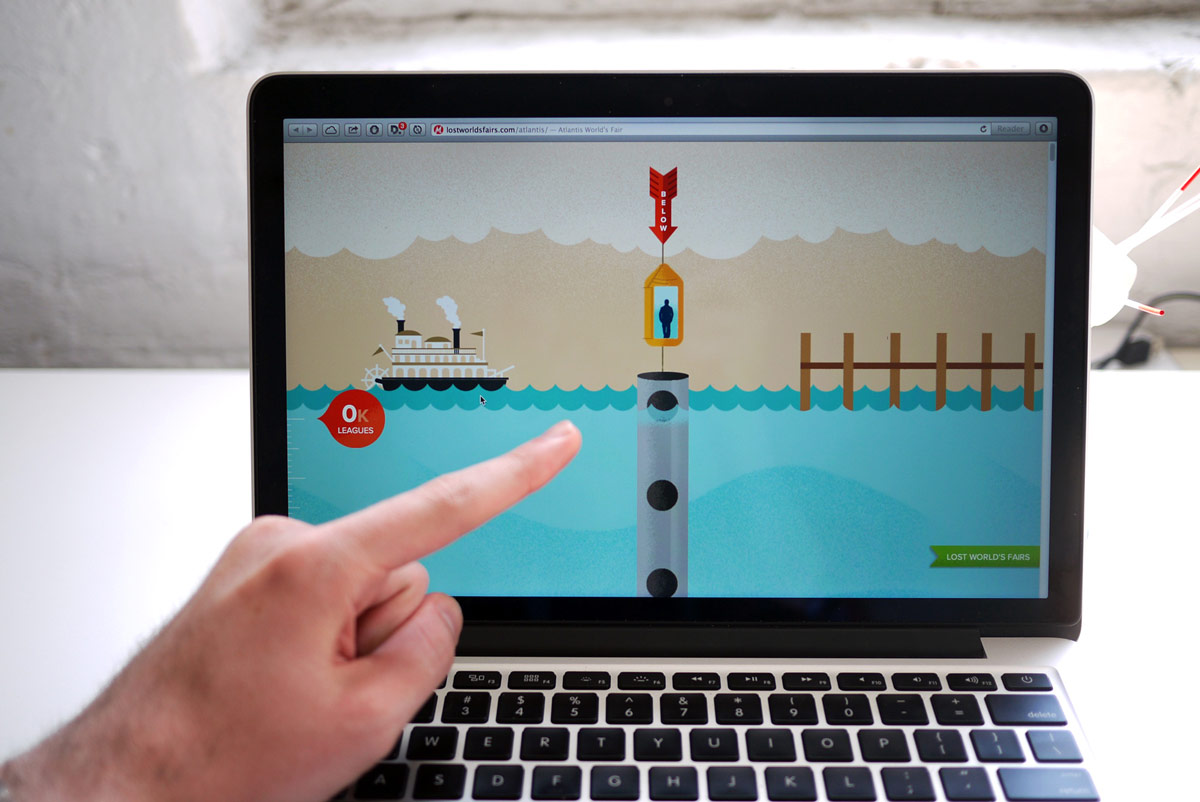
“I learned to make websites because I agreed to do something that I didn’t know how to do and then I had to figure out how to do it. That seems to be a pattern…because nobody knows how to do what was invented last week. You have to say you know how, then figure it out under the gun.”
Tina: Well, you mentioned risk, so that’s where we’re going next. Have you taken any big risks along the way?
Yeah! I started a design business without knowing what a design business was. That’s a big risk, even though if it had failed, it would’ve only hurt me.
Starting to write was a risk as well. I have this belief that you should write what you know when you know it. The idea of a guy in his 20s writing about design like he knows what he’s talking about is a big risk. But I had ideas, opinions, and questions I thought were important. There’s gotta be people who’ve said, “What the fuck does he know?” They might have a point. (laughing) As soon as you start writing like you know what you’re talking about, then you have to back it up. But, I’ve always been very clear that I am making it up as I go along. I’m learning on the job.
Another risk was in 2004 when I took on a user interface job without knowing what user interfaces were. I had a client call and was asked if I did that sort of work and I said, “Yes.” While I was on the phone with the client, I looked up “user interface design” on Wikipedia. The job was a six-month contract that ended up being a year long project, which ended in a lawsuit between the client and the company that hired me. So, I wasn’t able to show any of the work I did over the course of the year.
Tina: So you weren’t able to include any of that work in your portfolio?
Nope. And the job before that was a packaging job for a pretty well-known small-batch chocolate brand. After I had worked on the chocolate project for about five months, they decided to start over and go in a different aesthetic direction. So, I left. I put the killed work in my portfolio, but then got a call from them, threatening to sue me if I didn’t take the work down. At that point, I’d been professionally working for over two years and had no portfolio, save student work. Needless to say, I was really bummed.
What I did next was totally asinine. I decided that I would rather be a happy barista than a sad designer. I had saved a little money and I took the next three months off to draw. Every single day I drew something and put it on the Internet. That’s when I started The States Project and did a lot of other stuff, which turned into an illustration career.
The choice to do the unreasonable—to live off of savings and try to get happy—was a risk. I figured it wasn’t worth finding a job designing for someone else if I was still going to hate it. That time away re-acclimated me to enjoying what I wanted to do for a living. I look back now and that was a big lesson. When everything goes to shit, listen to your heart and try to make yourself right; if you can do that, then everything else will hopefully fall into place.
Not everyone feels the same as me about the “happy barista vs. sad designer” thing, but to be willing to say, “I am more important than the work,” opens up your choices. You can drop the mic and walk away to take care of yourself. You are more than your job. You can do other things and still be you. That isn’t insightful to normal people, but for me it was, because design is all I’ve ever done. And maybe it will be for other design folks, since we assign so much identity to the job. That whole “design is a way of life” thing makes me uncomfortable.
Tina: What I want to know is if you really got a job as a barista or if that was just a figure of speech?
No. I had savings for three months—I called it my “fuck you” money. That’s the money you save up so that you can walk out of a situation and have enough time to regain your footing and figure out what’s next. I hated design at that point, because everything fell apart. Two years wasted. A lot of fruitless effort. I decided to draw instead of building a portfolio, and I could do that because I had my money set aside. I drew every day. The only goal was to satisfy myself. Luckily, that worked out and turned into an illustration career.
Then, a similar thing happened when I stopped illustrating. I was getting mostly editorial work, but saw the bottom starting to fall out. The art directors I loved working with were changing magazines three times a year or leaving the industry. I thought, “Oh, man. It’s either go down with this sinking ship or build my own leaky rocket and see if I can go somewhere.” I wanted to leave on my own terms rather than have the work dwindle away. I considered what I was good at and what people were interested in—they seemed to like my writing and the lectures I had given in the past year. I asked myself what would happen if I mashed those two things together. I took a couple days off, then launched the Kickstarter campaign for my book, The Shape of Design. The project was funded and after that, I worked on the book for a year.
My career seems to cycle every couple years. I started out doing packaging and book design. Did user interface work for a couple years. Did illustration for a few years. Then, after the Kickstarter campaign ended at the beginning of March 2011, I worked on the book for a year, and it shipped in May 2012. After that, some family health issues came up and I had to take six months off work. I’ve only been working again since this past March. That’s the past two years in a nutshell.
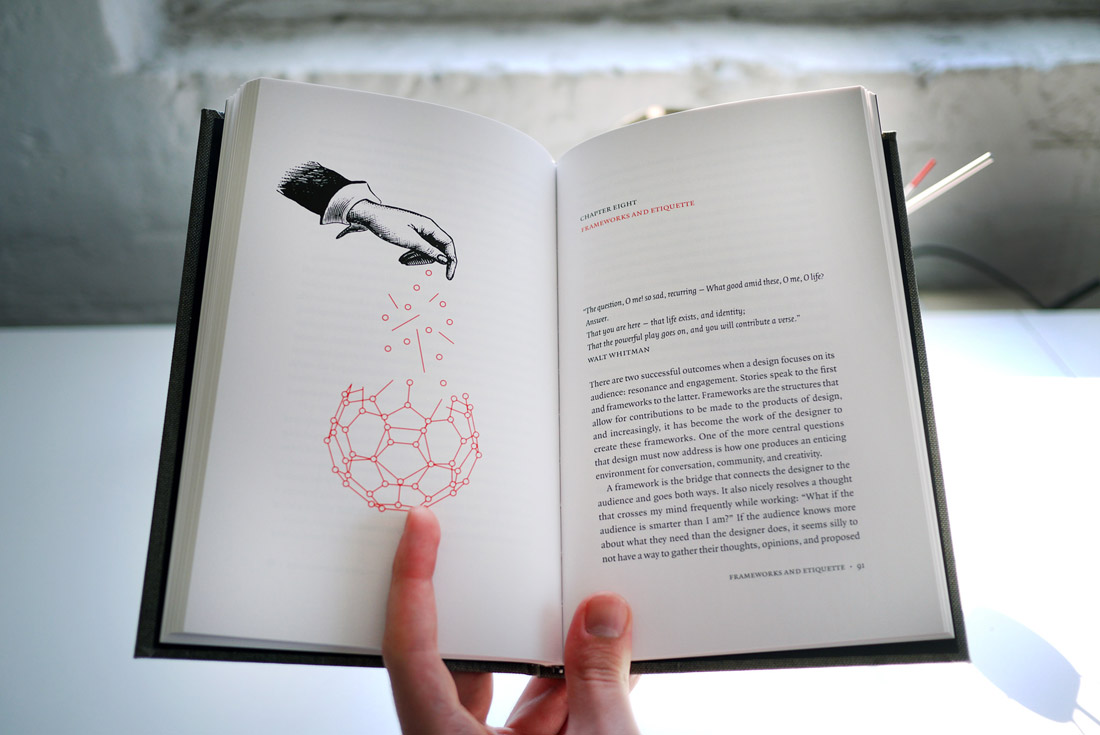
“I think everyone has a window of approval for their work; sometimes that’s years and sometimes it’s months, days, or hours. Your approval of your work metabolizes no matter what, and it doesn’t matter how good you are.”
Are your family and friends supportive of what you do?
Absolutely. I’m totally thankful for that. It was easier for them to understand what I did when I was doing illustration versus web work. With illustration, I could pick up Bloomberg Businessweek and show them the cover I had drawn for it. Everyone knows there are pictures in magazines, and someone has to draw them or photograph them. Even though I don’t feel like they totally understand what I do now, I don’t know if I’d want them to.
I’ll explain. My dad rebuilt cars for years and years and I didn’t know what the hell was going on with that. I was just used to seeing him come into the house with grease up to his elbows, cussing about how things are hard to reach. But I knew that at the end of the day, there’d be a cool car that we could go for a ride in.
Ryan: It’s the mystery of it.
Yeah. If people do other things, then the likelihood of them understanding your process or woes is pretty small. The important thing is to help them understand the results of what you do. As long as I’ve framed my work in those terms, people have been very understanding of what I do. You explain what you do by saying what you help them to do.
Wait a minute—I’ll be right back. I have to use the bathroom.
(Frank leaves and returns)
Ryan to Frank: While you were away, we were talking about something that happened before you got here tonight. Just as we walked in, a guy was leaving the bar and stopped, looked at us, and said, “I’ve had a lot to drink, and I probably shouldn’t say this, but you two look like the couple from 101 Dalmatians, if it was modern-day and in New York.” Tina asked the guy if that was a compliment and he said, “Yes!”
Totally! If one of your questions was, “What fictional character would you want to be?” my answer would be Roger Radcliffe from 101 Dalmatians. Here’s why that’s the best possible answer, coming from a dude’s perspective: he has a gorgeous, awesome, fiery wife that complements his weaknesses with her strengths; he lives in a brownstone in London, half a block from the park; he stays at home all day to write music; and he has a buttload of dogs. Sounds great, right?
Tina: Yeah, it does.
If I think about my ideal setup, that’s it—maybe not the music part because the world doesn’t need to suffer that way, but I could sit at home and draw or design.
Ryan: I could sit at home and write music all day. Maybe it’s a sign?
(all laughing)
Tina: Alright, moving on. Do you feel a responsibility to contribute to something bigger than yourself?
I guess so. Living a life that’s just about you is kind of a failure, isn’t it? I don’t think you need to change the world, and I don’t think that trying to put a dent in the universe is for everybody—in fact, I think that quote is kinda bullshit. But I do think you should live for something other than yourself because if you don’t, you’re totally unbearable. I think it’s important to leave room in yourself for something more than you.
As far as higher purpose in my work, it doesn’t matter, as long as I don’t do any harm. If I can contribute through my work, that’s great—and preferable. However, my experience says that that chance isn’t always there, and to act like it is always there is a bit disingenuous. If I get a chance to write about something I’ve learned, make someone feel more understood, or build something that helps someone, then that’s worth my time.
I’m a little allergic to the talk in the industry right now about “world changing.” Obviously things need to change, but it’s not just through design. It’s politics. Personal practices. All sorts of stuff. I guess the reason I get itchy around all this “world changey-designy” stuff is because it feels like hyperbole—like the way someone who lacks self-confidence would speak too highly of themselves. I’m allergic to braggadocio. Design can have that kind of influence, but I don’t think it’s the norm. And even in the instances where design can have that kind of influence, we’re usually using “design” as a synonym for straight-up smart planning. Lots of people can do that, not just designers. Don’t put a fence around it.
I suspect that the people who have a huge influence very rarely get into what they’re doing expecting that. For example, look at the very designy, impactful humanitarian organizations, like charity: water; even that starts with building a well, person to person, and collects the small things into something larger. Even if it doesn’t grow into something larger, it’s still something meaningful to a small group of people. Those people still have that well. That’s what I feel convicted to do—to foster and cater to small groups. If it scales or grows, that’s fine; if it doesn’t, then I’m content and happy to have been able to do anything at all. But, there are different viewpoints on this. I have friends who work at Facebook who really value reach. That’s why you go work there. But I prefer resonance. It’s not always one or the other, but there is usually a trade-off between the two.
This is an unpopular opinion, but my thought is that if a designer actually wanted to help to improve things, they wouldn’t design a poster—they’d be ladling soup, which has a more immediate result to their effort. There are personal benefits, but they’re internal. I’ve contributed to things like drives or poster campaigns in the past, and it still makes me feel weird because it’s supposed to be for charity, but I still get something from it. Promotion, whatever. It doesn’t feel clean to me.
Ryan: True charity is giving without looking for anything in return.
Right. Yet, I’m not out there ladling soup. So, I’m just as complicit as anyone else.
Ryan: What’s interesting about what you just said is that it makes me wonder if people who end up doing world-changing things actually go into it thinking, “I’m going to do something really amazing and change the world.”
I don’t know anything about this, but if I were to speculate, I’d say I think some of them do because they start small and know they’re going to eventually operate at scale. I think about the friends I have who work at nonprofits. A guy I’ve met describes how he got into that work as his “Popeye moment” because he “can’t stands it no more,” which is apparently a thing that Popeye says. This guy adopted a daughter from Vietnam and after going over there a few times with his wife to visit orphanages, they were shocked by the conditions. After they successfully adopted their daughter, the idea of those orphanages kept eating away at them; finally, they couldn’t take it anymore. They signed leases and opened their own orphanage in Vietnam. His primary requirement for the caretakers was that they had to enjoy the kids, and their main tasks were to dispense meals and hugs.
Tina: That’s awesome—and it came out of a very personal experience.
Exactly. And it’s not a huge nonprofit, but I have to look at that story and think that that must be how a lot of the nonprofits we know about were started—because of a personal experience. It always starts with what’s in front of you; it starts specific and gets big. Listen: I don’t know anything about the nonprofit world, and definitely nothing about “changing the world” or “contributing to something bigger than myself,” but I look at all this and there seems to be something to learn. Things don’t trickle down. They blow up.
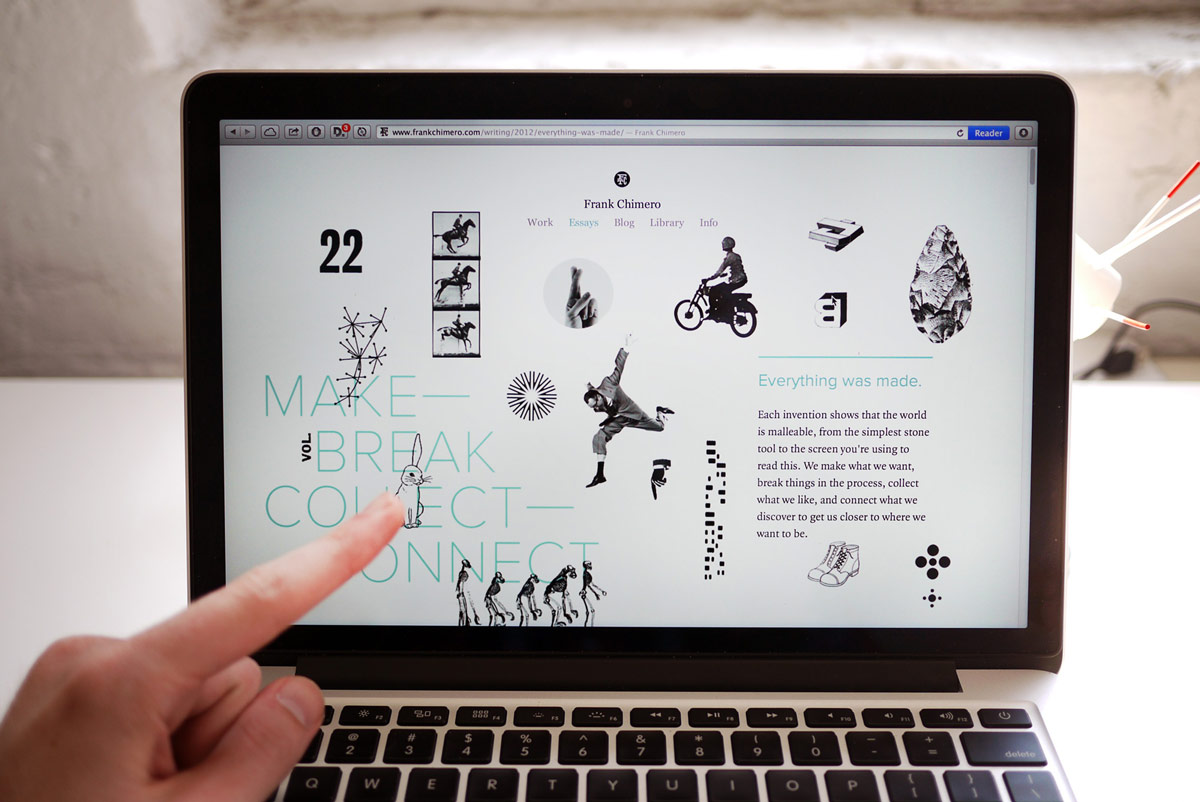
“Any creative pursuit is like solving an endless puzzle. You don’t know where to start because there are no edges…you start with the two things in front of you that fit together, and then build off of it.”
Tina to Ryan: Do you want to ask your favorite question?
(Frank to Ryan) What’s your favorite question?
Ryan to Frank: Are you satisfied creatively?
Yeah, let’s talk about this. I think this question is bullshit, man. I know that this is sort of the namesake of the site, but the reason I think it’s bullshit is because the way you frame a creative practice should not be in terms of whether you’re content or not. I think everyone has a window of approval for their work; sometimes that’s years and sometimes it’s months, days, or hours. Your approval of your work metabolizes no matter what, and it doesn’t matter how good you are. That’s why I hit you up on Twitter recently to say “What if we’re thinking about this all wrong? What if contentedness about your creative work is more like eating?”
Tina: Yeah, Josh Brewer mentioned your comment when we talked with him.
Right! I read that this morning. It doesn’t matter how good the meal is. A few hours later, you’re going to be hungry again. Maybe the reason you’re dissatisfied is not because the burger you just ate was bad, but because you’ve already eaten it—your body processes it. Doing the work makes you better, so of course you’ll be dissatisfied with what you’ve already done. You’re better!
Any creative pursuit is like solving an endless puzzle. You don’t know where to start because there are no edges. So, you start with the two things in front of you that fit together, and then build off of it. And no edges means no obvious stopping point. Any time you step back to look at what you’ve done, it’s an intermediate step. When you’re “done” is a completely arbitrary choice. Creativity is a quagmire.
So, does it make sense to have your criteria for success be something you can never reach? I don’t think so. If you’re forcing me to answer “Am I content with my work?” then right now I would say yes—absolutely—but that has very little to do with what I’ve done in the past. If there’s anything I wanted to make right now, I feel like I could do some version of it. That flips contentedness on it’s head; it becomes less about the work you’ve done in the past and more about the opportunity and ability to do the things you want to do in the future.
If you’re looking for contentedness, I’d say stop worrying about your portfolio. Portfolios are super important in explaining yourself to other people and getting new work, but my body of work doesn’t really fill that role of fulfillment. If you expect to find contentedness there, you’re facing in the wrong direction. That’s about the past. You need to face forward. Personal satisfaction comes from putting yourself in a place where you can multiply the opportunities you have and make yourself available to whatever comes up. You want to be in a spot where you can respond to the world. If an idea hits you, then you can do it in some form. That’s what the Kickstarter campaign taught me: you don’t need permission from anyone to do awesome things. All you need is the time and space to work on it.
That’s my kind of contentedness. At this point in my career, I don’t care about getting more awards or whatever. I want to stay interested, challenge myself, and do things I think my friends and family would like. I want to be good to the people who like my work, help my peers do what they think is interesting or important, and make a living. But other than that, it doesn’t matter much to me. So, am I content? Yeah. But not for the reasons you’d think.
Ryan: I agree 100% with what you said. The Great Discontent has nothing to do with the work you make. It’s a vague question on purpose and it’s interesting to see how people interpret it in different ways.
Let’s be honest. Your question “Are you content?” is really, “What do you want?” Hopefully the person would know and could tell you; the next question would be, “Are you in a position to do that?” Those questions both play into being content.
Any creative person I know feels a bit of shame about his or her past work. That’s the genius of John Baldessari burning all of his work halfway through his career as a work of art—it’s a disavowal and an honest assessment of the creative practice. So what about shame? This is something I think about as a writer. When is it okay for me to delete something I’ve written, something I don’t like any more? Archives are good, but I don’t need to stand behind all of my work forever. Kafka wanted all of his writing burned when he was on his deathbed and who could blame him? I hate that as a reader, but love it as a writer. Maybe that discontentedness is a form of shame, and maybe that shame is good because it shows you’re growing. Even if you’re not growing, at least it implies that you’re changing. I don’t know. How do you guys feel about the first few interviews you did?
Ryan: There’s stuff I want to go back and redo.
Tina: I won’t read them. I know I’d edit the shit out of them now.
What if you didn’t care about the story?
Tina: The content is still really valuable, though.
Aha! So if the work was all from you, then you would’ve deleted it a long time ago?
Tina: If it was some stupid poem I wrote, then it would be gone.
Yeah. Sometimes I look at my old stuff and feel like I have a bunch of stupid poems on my hands.
I wonder if every creative person hits this moment, when, for some reason, they don’t make the work for a while. Could be family or personal stuff, a giant vacation, a service trip, god forbid an illness, or anything else that separates you from your body of work for a period. They step away from all that work and when they return, they want to pull everything they’ve made back in. Undo the work. Unsay the words. And once you realize you can’t unsay things, even if you’ve deleted the work, there’s a period of wanting to revolt against your old self to clear the slate. I’ve been there a few times.
Something I’m fascinated by right now is how bands follow up really huge hits. What did Michael Jackson do after Thriller? What was Fleetwood Mac like after they finished Rumors? Another example is Radiohead doing Kid A after OK Computer.
Ryan: That’s also a conversation that revolves around art and commerce and the pressure to commercialize things.
Well, I think those bands had a specific benefit. After such big hits, they had carte blanche—a genius license to do whatever they wanted. With the exception of Michael Jackson from Thriller to Bad, the follow ups are much different. Radiohead’s Kid A and Fleetwood Mac’s Tusk seem like knee-jerk reactions, like they were uncomfortable or bored with the success. They tried to do something on the other side of the coin to say, “You’re wrong for paying attention to me,” or, “This idea is bankrupt. It was successful because we wrung everything we could out of it.” The only option they had was to do something completely different.
Ryan: I’d agree with that.
I have no work that comes anywhere near any of those things, but I think I’m similar to a lot of other creative people in that I’m deeply uncomfortable with attention. It’s one of those things where if you gain any attention, you start to subconsciously—or maybe even consciously—make creative choices to have people stop paying attention to you.
Tina: I think that people’s expectations can feel like chains. When we create something, we want to have total freedom, right? We don’t want to feel like our audience is putting pressure on us to do something. We want to prove that we’re still free and can make our own choices.
Exactly. Attention creates expectations that feel like a saddle. And most horses buck the first time a saddle is put on them. It is a natural inclination. Maybe it’s immature behavior to want to shake off other people’s expectations? I don’t know. But, if I’m really honest about where I am creatively, that’s what I want to do—I just want to buck. I want to fuck with shit: I want to put illustration in the rearview or do it in a completely different way; I want to write, but not about the topics people expect me to; I want to make websites, but not in the way that people are making websites now. I’m kind of bored with the web. It feels homogenous. People want to be successful and, currently, success is measured through money and attention. That’s not a bad impulse; it’s the most logical one. It’s commerce, after all.
But I’m in a position to buck a little because I’ve restocked my “fuck you” money. So I’m closing the studio for a few months and walking into the lab to experiment. I’ve been keeping a text file of a bunch of small, provocative phrases I’ve wanted to tweet, but haven’t. I thought, “I like these. What if I elevate them instead of letting them get buried?” I think they deserve more consideration, and Twitter’s the wrong spot for that. These snippets have charm. Or insight. Or, they’re just really base and uncomfortably honest.
Ryan: Did you try some of them out last week? You had some good ones.
No. The ones I worked on today were: “You have to burn something to make light.” The second was: “The danger we’re listening for is the danger we created.” There’s another one that just says “Love me.” They’re morsels of text that deserve consideration, I think.
One of my favorite artists is John Baldessari and if you look at his work, you would say, “Oh, this is where Frank gets some of his mojo.” (all laughing) I’m taking Baldessari’s hand-lettering, and juxtaposing my phrases with images from the Commons I’ve been collecting the past few years. I’m calling them “Baldesorrys” right now, until I think of a real name or know what it’s about.
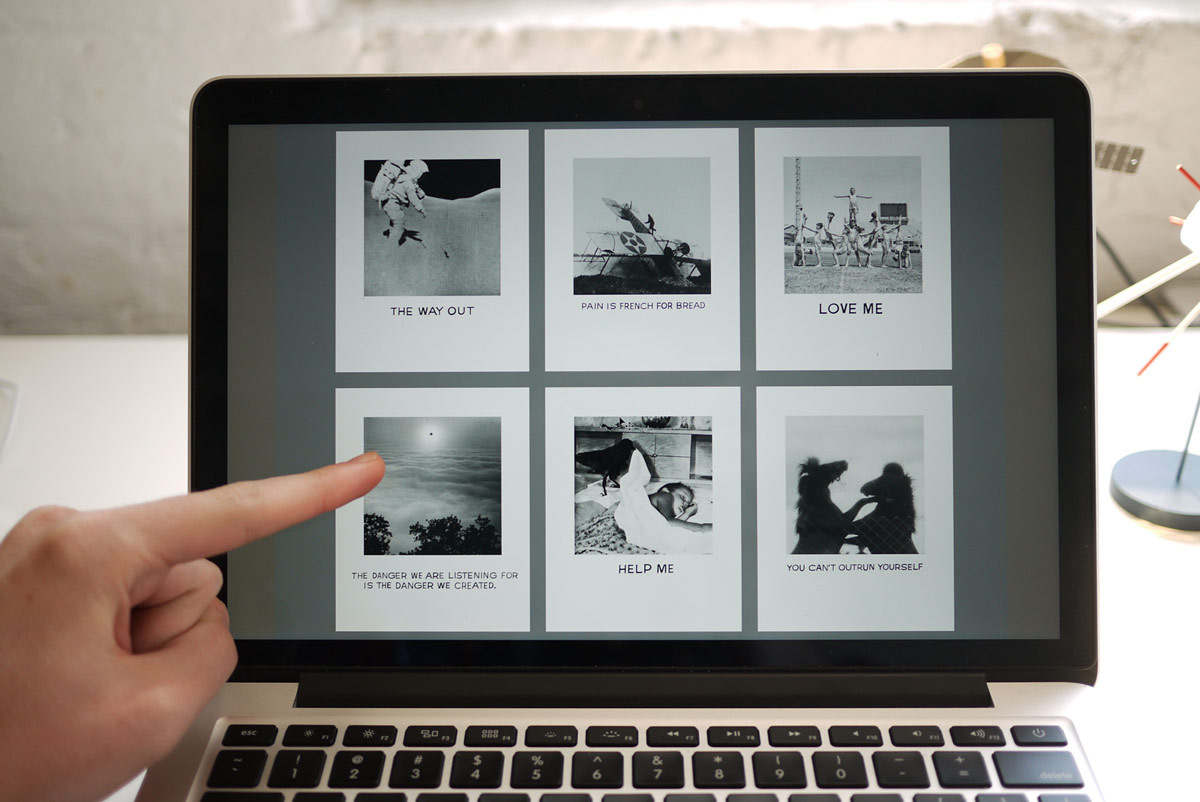
“Time is a given, but is a fixed amount. Money isn’t guaranteed, but is flexible. That means you need to be very conservative about how you sell your time…”
What advice would you give to a young person starting out?
Stay out of debt. If you can’t do that, then make that debt as small as you can. I realize that things are different now than when I was in school a decade ago, but I’ve been able to capitalize on all the unique opportunities I’ve had since finishing school because I didn’t have a financial burden.
What I said earlier about contentedness and the ability to say yes to the things I want to do and no to the things I don’t want comes down to the relationship between time and money. Time is a given, but is a fixed amount. Money isn’t guaranteed, but is flexible. That means you need to be very conservative about how you sell your time—only sell it away if you really, really need the money. If you are in debt, then you really need that money. I feel for everyone who is doing something they don’t want to do or who can’t capitalize on their great ideas because they’re working a day job to pay off student loans and come home exhausted. They’re in a situation where they have to do that. If you’re young and in a position where you can choose to not take on debt in order to free up your time, then I think you should do that. The creative things you want to do probably don’t cost that much because the cost of things has dramatically dropped or you have friends and can ask for help.
I recently read a blog post about making movies and it said that the hardest position for a filmmaker is to be working on a middle-budget film. The reason is that if you’re on a high-budget film, you can hire anybody you want, pay them well, and they’ll say yes and do the work how you want it. If you have a no-budget film, you can call in favors. You can reach out to friends or people whose work you love and ask them to be a part of it by doing whatever they want and whatever they have time to do—and everyone is happy.
Where you fall into hell is medium-budget projects because there is just enough money at stake to make everyone cranky. Employees are getting paid, but not enough, so they start looking for other kinds of value. They need it to be a portfolio piece to make it worth their time or have it lead to something else. On the other hand, the employer feels compelled to control it, because they are a paying customer. In middle budget situations, you really need to be on the same page as whoever hired you, otherwise you’re at odds. Of course, everyone’s goals don’t need to be the same, but they do need to be compatible. Middle-budget stuff creates a situation where things are unlikely to be compatible.
If you’re paying me well, I’ll say what I think and I’ll say it a second time. If you have a different opinion or don’t want to listen, then I’ll say, “Okay, that’s fine.” Professionally, my ass is covered, so let’s do what they think. Who knows? There’s a chance I’m wrong! And if I am, I get to learn something. If the job has no-budget, I’ll say, “You need to let me do what I want because you’re not paying me anything.” If it’s medium-budget, everyone has enough at odds to make them totally fucking cranky. That’s a big reason to not get into debt when you’re young: you won’t have access to big budget jobs, but you need money, so you’re stuck in middle-budget jobs, and trying to build a portfolio. By the nature of things, you are consistently putting yourself in a place where you’re not going to be happy.
Ryan: That applies on so many levels.
This is increasingly how I feel, to the extent that I will take a medium-budget job that comes in and try to drive them up to a higher budget, or even a lower budget to get more creative control. Those middle budget jobs have never worked out for me. Sometimes you get creative control and great pay, but it’s such a rare thing. Definitely worth appreciating and savoring when it happens.
Tina: That’s so true.
As a side note, I want you guys to be in this interview, too. I would be embarrassed if it was just me talking for paragraphs and paragraphs.
Tina: No, we’ll be in it, too. Promise.
Good. I think a few years ago when I was interested in making a name for myself, I would have been all about this interview. Now, the thought of it makes me uncomfortable. Funny how things change. I want to be asking the questions—I’m really envious of you two.
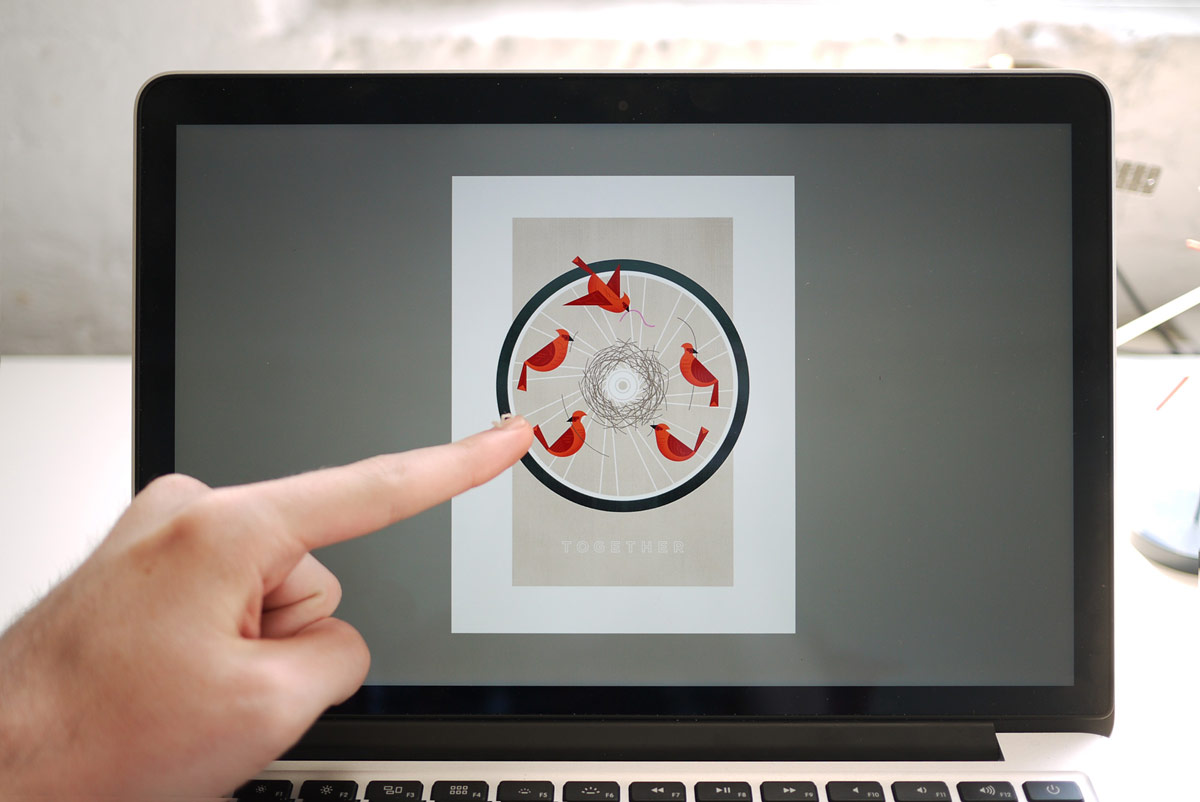
“You want to be in a spot where you can respond to the world. If an idea hits you, then you can do it in some form…you don’t need permission from anyone to do awesome things. All you need is the time and space to work on it.”
Tina: Sometimes shit happens in life and it makes you rethink what’s really important. I don’t know about the family situation you referenced earlier, but my mom passed when I was really young. That made me reflect on life a lot.
I’ll tell you where I’ve been in the past two years. I was on the phone with my print broker choosing paper stock for The Shape of Design while my dad was at home dying of cancer in a fold-up cot rented from the hospital. The book is printed on the wrong paper because I was so stressed that I told the guy the wrong specs. I pick up the book now and I’m like, “Fuck.” I look at that dumb book, see the mistake, and it reminds me of when I was pacing around my parent’s backyard, trying to be clear-headed in the middle of a storm. This was four months after a T5 tornado leveled the town where my parents lived. It’s almost Grapes of Wrath style—a medley of unfortunate events. A tornado blows through, destroys the family business—
Tina: Was that Joplin, Missouri?
Yeah. My parents lived in Joplin. After the tornado, my dad and brother-in-law worked for six months to rebuild the family business. A couple months after the building was rebuilt, my dad was diagnosed with pancreatic cancer. After the diagnosis, I flew back and he passed away two weeks after that. The cancer just burned through him.
Tina: Wow.
Sorry. I’m being a huge bummer. I’ve had a lot of people come up and ask where I’ve been. Guess this answers that. Six months later, my mom was diagnosed with lung cancer. I left New York to be with my mom and was nowhere to be seen from August through February of last year. That’s why I passed on your interview invitation the first time around—because I wasn’t working and not in the right mindset. At all. I was back in Missouri with my sister taking care of my mom. She passed in January. I lost both of my parents to cancer within a year. What do you do with that? I don’t know. Still don’t. I guess you re-evaluate everything.
Tina: What’s left that really matters after that?
Right. Everything got inverted. The stuff I wanted was now worthless, and the things I thought I could sacrifice for a while became the most important things in the world.
I had to make sense of what had just happened. I finally decided there’s two ways of looking at your life: you can either think of it as the things that happened to you, or as the things you did. I’m so thankful I was able to drop everything for so long and be there. Obviously, I don’t like what happened, but I can’t change it. All I can do is choose not to suffer. That doesn’t make me a worse son. The past couple years have completely rewired how I think. When you lose so much so quickly, you come out the other side bulletproof to bullshit.
I now know that the work doesn’t last—and if it somehow does, it lasting doesn’t have much to do with me. The work went far because other people carried it. Disabusing myself of the idea that I did anything important or special has been really good for me. If the bounty of success is attention, and you feel like you don’t deserve that attention, then you have no responsibility to it. It has no power over you. That frees you up to take risks. If those risks pay off, then great. If they don’t: c’est la vie. At least you’re alive, tried something, and lived a little.
A couple weeks ago, I added to my Twitter bio the line, “It’s just a ride,” from Bill Hicks’ comedy routine. What Hicks means by that is all the entrapments of success—the desire to have money, the admiration of your peers, the beautiful wife or husband, life in the big house—it’s all just a ride. You choose to get on it, you sit down, and they strap you in. While you’re on the ride, you don’t believe it’s a ride because you’re feeling real feelings. But if you’re not on the ride—because you chose to get off—you want to tell people who are standing in line or who are on the ride that they’re crazy for thinking it’s real, because it’s just a ride.
We all have desires. There’s always discontent and, as far as I can tell, there are two ways to go about it. The first is to get more. Make more money, make more stuff, work more, buy whatever you want. The second is to want less, to not be so desirous. Work less. Have less. Be still. Savor. All that gets easier if you look at success and say, “It’s just a ride.” Of course, to get to that point, you need a certain amount of comfort. If you’re living hand-to-mouth, then of course you’ll be desirous. Basic needs and comfort are inherent human rights. I feel like that’s one of the things hip-hop is about. What’s the difference between wanting a safe, comfortable place to sleep and wanting a Maserati? Not much if both are out of your reach. Anyway, my point is you need to be at a certain level of comfort and affluence to recognize when enough is enough. It’s cool to want more pie, but how much pie can you eat?
Appreciation is the cure for desire. The past couple years have made me realize just how fortunate I am. I lost a lot, but I still have so much.
I’m lucky to have many friends who are creative people. We speak the same language. Sometimes it’s encoded. If I invite them over to my studio apartment in Fort Greene to make them dinner, I’m not worried about what they’ll think of my small apartment. They value my ability to do what I want. They read my studio apartment as the “sacrifice” I make to be able to take a few months off and experiment—and having a small apartment in a nice part of the city is not that much of a sacrifice at all. I can have a bit more confidence in my choices, because I know my friends speak the same language and can translate my tiny apartment as the cost I pay for more freedom. I feel fortunate for that—to be surrounded by people who appreciate the same things I do and understand the costs.
Ryan: I think that’s one of the beauties of being here. The community is why we were attracted to New York.
Tina: I agree! So you’re in Brooklyn. How does living there impact you?
My favorite benefits of Brooklyn are not specific to Brooklyn. I feel like I’m surrounded by people who understand me, so I can make totally bonkers choices and they’ll roll with it, trusting I have a good reason. I work out of Studiomates so I get to be surrounded by people who are my friends and, to a certain extent, my heroes. I get to look over at Mandy Brown, who edited my book and taught me how to be a better writer. Next to her is Jason Santa Maria, who taught me how to be more methodical as a designer. A couple seats over is Jessi Arrington, who reminds me to loosen up and have more fun.
Sometimes being surrounded by folks like me is beneficial with practical work stuff. I can ask questions. Hire them to help. Other times, it’s more about empathy. If I’m bitching about something that’s really specific to my kind of work, it’s nice to be around someone who can relate. That’s the benefit of a shared studio space and being in New York. The successes you have; the complaints you have—when you raise them, there’s likely someone around you who can empathize without having to translate. You don’t have to explain yourself too much.
That ties into the next question: Is it important to you to be part of a creative community of people? It sounds like it is.
Absolutely. One of the reasons I like being in New York is that I’m surrounded by people who are similar to me in whatever weird way. But just as important are the people who are unlike me. It’s nice to ride the train to work and hear four languages. New York isn’t for everybody, but right now, it’s for me. I try to be thankful for finding a place.
What does a typical day look like for you?
I wake up at 7:30am, stop for coffee and a croissant on the way to Studiomates, and get into the office by 9am. I answer email for the first hour or so and then get a couple hours of uninterrupted work time. I go to lunch around noon and when I get back, I do the best I can. The afternoon is usually a total wash—I usually feel like a cat chasing after a laser pointer. Sometimes I’m good and leave work at 6pm, go home for dinner, maybe go see a movie or hang out with friends. Other times, shit might hit the fan and I’m at work until midnight or later.
Ryan: What do you do now that you’re on your sabbatical?
I still go into the studio like there’s work to do, because there is—only it’s for me instead of other people. While on sabbatical, I hope to own the doing and the not doing. I don’t want to stay at home and work or go into the office and not work. I want to wake up and have a plan. If I’m working, then I want to go into the office and know what I want to get done by the end of the day. If I’ve chosen not to work, I want to get on a train and go to the Met with a sketchpad or go to BAM and watch two movies in a row. I’ve done enough haphazard shit and I want to draw the lines very clearly. It’s not about “work and life” separation, but clarity in each day’s goals.
Tina: Alright, I have to go to the bathroom, but am leaving Ryan in charge of asking the last question because I think we have to leave—they’re closing.
Ryan: We usually disarm people with bullshit questions about favorite food and movies before asking this, but we’re not going to do that tonight.
(Drunk) No disarming.
What kind of legacy do you hope to leave?
Okay, I can do the favorites. Favorite food: pizza. Favorite movies: Indiana Jones and the Raiders of the Lost Ark, The Sting, Days of Heaven, and Harold and Maude.
As far as legacy, I have really modest expectations. I don’t expect to reach or change anybody I don’t already know. I realize there’s potential for that, but I don’t expect it. Are you asking me to imagine what people will say when I’m dead?
Ryan: Yeah, or what you hope for from a personal or professional standpoint.
Here’s what I want. When I’m laying in a casket, I’d want people to say, “So long, Frank. He made me think about things differently.” That’s it.
Ryan: At the core, is that what really matters to you in the end?
Professionally, yeah. I feel like that’s what I’m best at.
Personally, I guess: “There goes Frank. He was big-hearted, and I’ll miss him.” I want my heart to be on my sleeve and I want that heart to be a generous one.
Ryan: That’s good.
(Tina returns)
(Frank to Tina) We’re done.
“There’s always discontent and,…there are two ways to go about it. The first is to get more. Make more money, make more stuff, work more, buy whatever you want. The second is to want less, to not be so desirous. Work less. Have less. Be still. Savor. All that gets easier if you look at success and say, ‘It’s just a ride.’”
